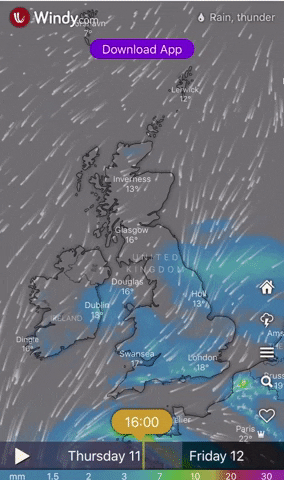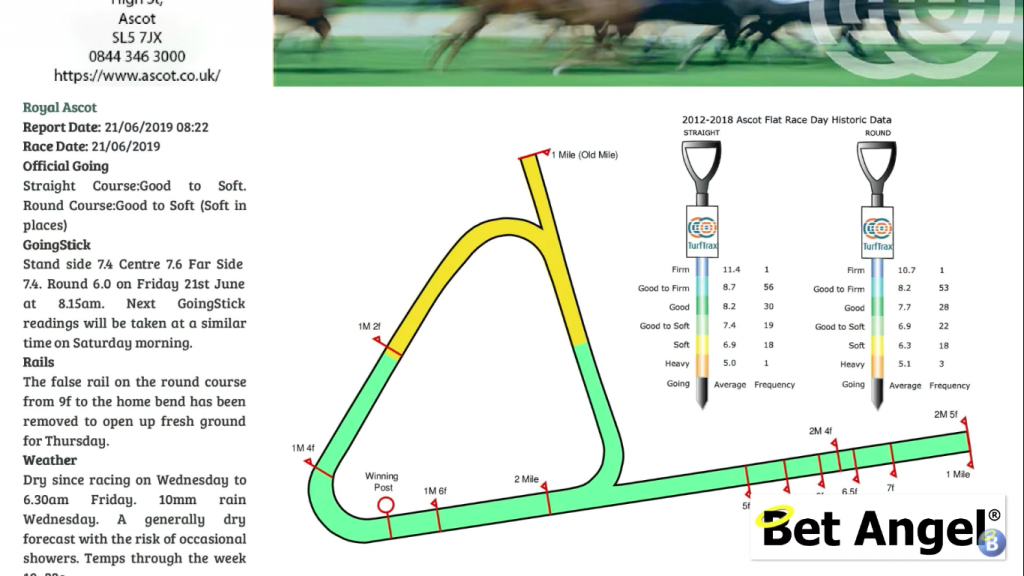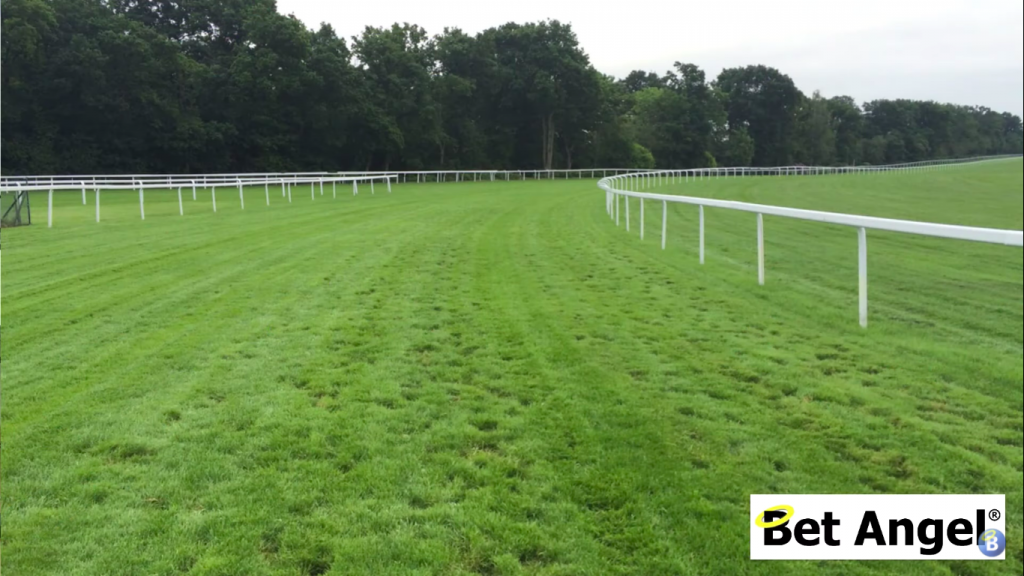We are all experts in something!
So you have your trading software fired up, you point at that the betting exchange and scout the markets on Betfair for some opportunties. Maybe you are looking for some small profits or perhaps a bit of swing trading? But ideally you will be an expert in something if you are sports trading. If could be football, tennis, racing or some specific strategy.
So I’ve got a question for you… What are we experts on in the UK?
We talk about it to strangers, to our friends and family – we watch it on news all of the time, everybody is an expert on this particular phenomenon…
Well, it’s the weather!
So how does this defining knowledge help you can bring something to the markets to create a profitable trade?
Understanding the forecast – weather and trading
Well, the funny thing is there is actually a weather market within Betfair where you can actually bet every year on the highest temperature that’s going to reach in the summer, but that’s not what I’m talking about in today’s blog post.
There are plenty of trades where the weather will directly influence the outcome of a market and it can even help you trade it.
Probably the best example of this is the completed match market when cricket trading, because that is completely 100% weather related market. Cricket matches have to take place over a certain period of time, if they can’t, then they’ll be truncated or perhaps even abandoned.
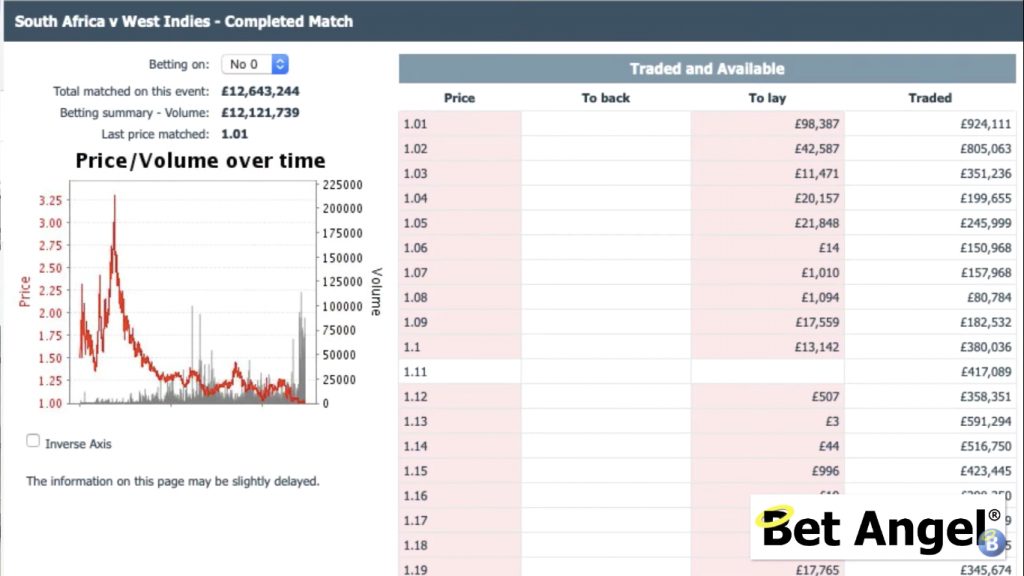
So the completed match market allows you to directly trade the weather. If play looks less likely expect it to reach higher prices. I have mentioned this specifically in the cricket trading video that I did which you can view by clicking here.
But for what I am talking about specifically is if you think that play is going to be abandoned then it’s very often worth getting involved in those markets. With cricket, you’ll know with plenty of warning whether you think there will be disruption on a certain day. Even if the match is completed the weather will have an impact on a limited over game thanks to the scoring system.
Therefore in Cricket markets, everybody watches the forecast and has a comment about the weather. So you will have a heads up about whether this could potentially affect a cricket match in a few days or a few hours time.
Checking the weather can mean it’s a case of who is the fastest to that lay bet!
Modern advances in weather forecasting
The great thing about looking at weather and the related impact that it has on markets is there is actually a plethora of information available for you now related to the weather. Betfair traders now have a wealth of information available to them, not just from the met office.
When I first started to trade on Betfair many years ago, you’d have to rely upon what they were saying on the actual commentary and the discussion that they were having. There was no sort of additional knowledge that you could get. The great thing nowadays is we actually get radar and precipitation radar.
I have it on my watch, on my phone, you can have a look of a whole variety of sites on the Internet that will not only give you a precipitation forecast. It is excellant that you can actually see where the rain is and where the winds are, what speed they are as well as the average gusts and the direction of them.
So that’s spectacularly handy in trying to work out if the weather is actually going to affect the sport you’re looking at.
We’ve started this post by opening with a really obvious market that you can benefit from, the completed match market in cricket. It can achieve pretty large turnover and has the potential to be a pretty good trading market in its own right.
Wind: Golf’s nemesis
Cricket may be the obvious one, but there are plenty of opportunities that you see across a number of different sports. One of these areas where I look at consistently for weather patterns is in golf.
When you’re looking at links golf, like the British Open Golf, one of the things that you will find is that the links golf, depending upon how the course is situated, will play very differently according to the prevailing wind.
So if they’re playing the out nine in a certain direction and the in nine in another direction, you could have wind coming from a certain direction or there could variable wind that will directly affect how the odds are moving within the market.
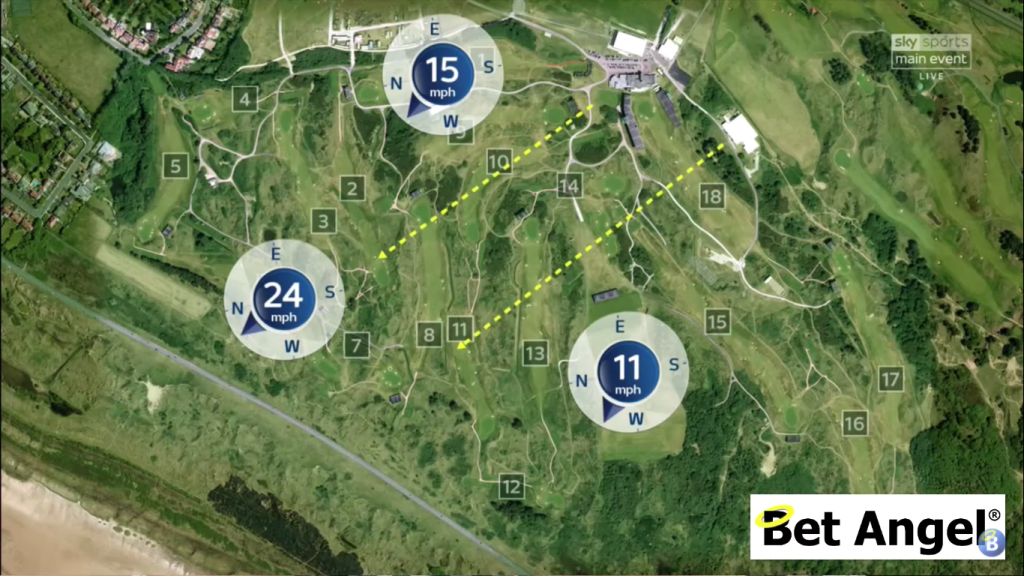
Imagine – you’re teeing off first thing in the morning and the conditions are relatively benign or perhaps it is the evening, but during the day, the winds pick up and directly affect a certain batch of players. If you actually look at a golf tournament, you can examine the tee times and then you split those tee times down.
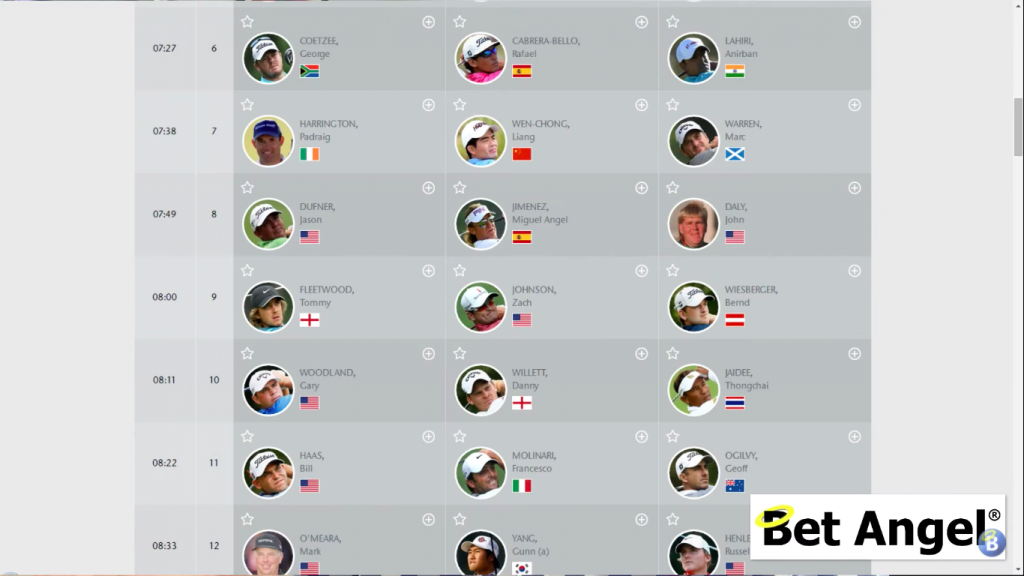
After looking at this you can then start looking at how the weather is likely to affect that. During The Open Golf one year, the wind was definitely a problem. Watch below to see the impact of wind when playing golf!
This scenario had a significant impact on the way that the tournament played. This is because in the run up to the cut at a golf tournament, all of the players are jumbled up. You could get a guy that’s probably going to be in contention at the weekend with an amateur.
As a consequence, when they go out, it’s going to be fairly random in terms of who’s going to be where and where they’re going to be on that particular course.
When we get to the weekend at golf, what you will find is that all of the players, the tee times organised so that basically the last couple of groups that reached the 18th green will be the ones that are expected to win the tournament and the tee times change around a little bit.
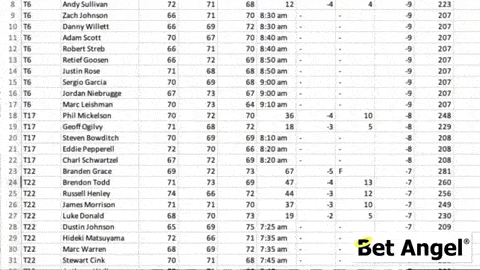
Typically, if you’ve got four players that are in the top of that list and they’re playing in two separate groups then they’ll still be equally affected by all of the conditions. There’s not a huge amount of variability there.
In golf, it tends to be the order of play, a question of how close are the number of shots are at the top, because if the conditions are going to go downhill later and they have got somebody in the clubhouse in the lead, but the conditions are going to worsen significantly for the later groups, then you may find that that affects the scoring and presents an opportunity for you there.
Golf was really the one that I cottoned on to first, where the weather was going to have a significant impact in terms of what’s going to happen within that particular tournament.
It’s worth exploring that as it’s a little bit more complicated in golf because you’ve got, maybe 156 players, half of that many going around which is often where things get a little bit more complicated, but hopefully I’ve detailed for you there the two states that occur when tee times are altered or depending upon the groupings within that particular tournament itself.
How weather can give you trading tips for racing
Weather applies to a number of different sports, but I first started taking a bit more of an interest in the weather when I was looking at horse racing markets because I was interested in asking the question that a lot of people do.
People often come out and say, ‘oh, you know, this horse doesn’t like this ground or all of this sort of stuff.’ So I started looking at it more seriously at how the weather impacted the way that that could influence the price on a particular runner.
Now, sometimes it’s a bit ambiguous and horses like certain types of ground, but it’s not very clearly defined sometimes. So, you look at some of these and think, well, I’m not sure what information is contained in that or how it’s going to influence the price.
However, you can if you keep your eye out, get away, pick up on really good long term trading opportunities. One of those occurred once at Royal Ascot.
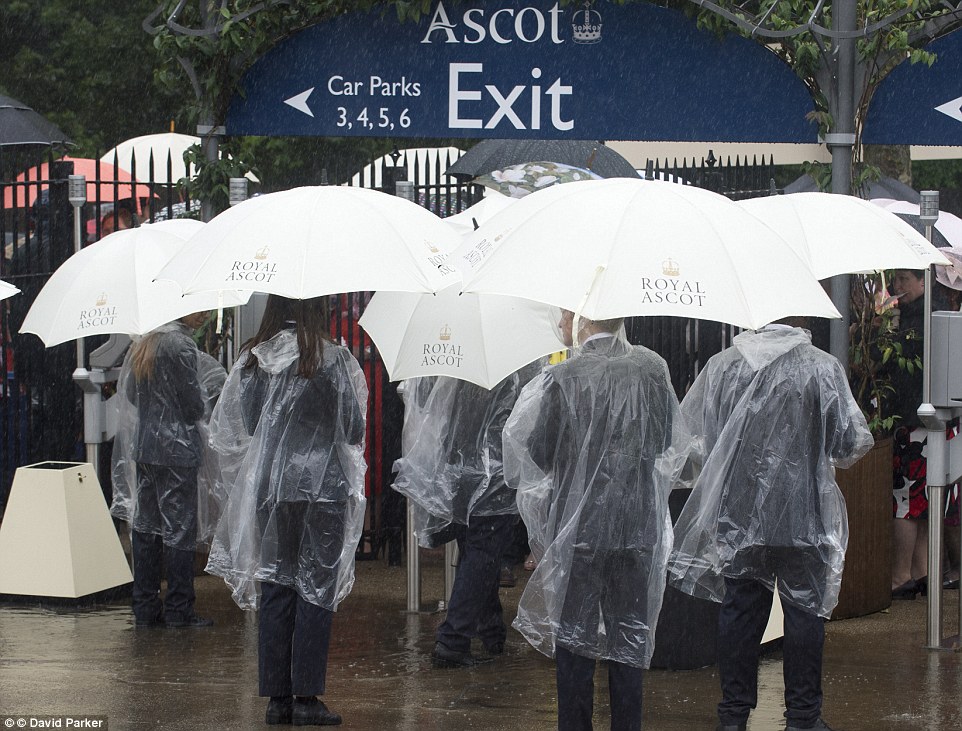
The interesting thing about this was it was really well telegraphed. So if you were going to Royal Ascot that year, then you would have known exactly what the weather was likely to be, especially if you were planning on dressing up. You would have known in advance whether it was going to be raining, which it was at the beginning or was the weather going to improve – which it did towards the end of the week.
When we look at the beginning of the week at Royal Ascot 2019, the weather was pretty poor and it looked as though that was going to continue for a couple of days before cheering up as we approached the end of the week. That brought into play a couple of characteristics.
So there was a horse called Sea of Class where the owners were debating whether this horse should run or not because of the weather conditions.
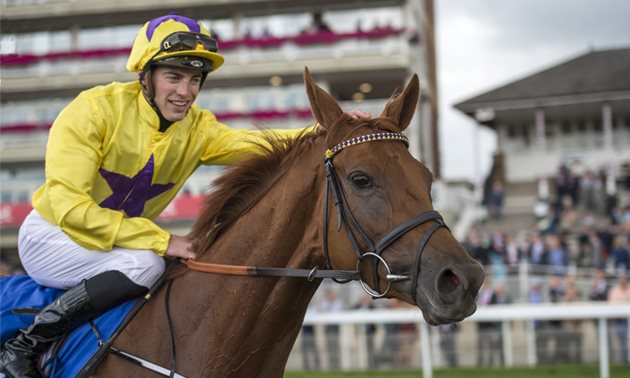
So this is your first tip. They’re basically saying, ‘I don’t want to run this horse on ground that is soft or getting worse.’ Basically, they want pretty good ground.
Typically, at most race horses, you will find they try and prepare the course conditions for what they were expecting. During the flat season, they want sort of good grounds, preferably, but it may sort of be goods to firm or good soft.
Also, one of the things that you’ll notice is that most of the courses in the UK aren’t completely straight, they undulate a fair bit. The topography of the course, various quite a bit. If you go and check out turf tracks, big meetings like Ascot will post up an image of basically the going of the entire course.
One of the characteristics of Ascot is that the swinley bottom is lower than the where the course is near the grandstand. That tends to retain water a bit more because obviously the water drains towards that.
So when you look at the going at Ascot, you will find that swinley bottom that the going tends to be softer than at the top of the course.
Obviously, depending upon the race, you may have a little bit of variability in terms of, whether it’s going to affect a horse or not. Clearly a horse that doesn’t like soft ground and has to run through swinley bottom is probably going to struggle a bit more than a horse that can just run the straight mile.
So when Sea of Class was flagged up by William Haggas, there was a bit of uncertainty about whether this horse should be running on ground that wasn’t particularly suitable.
Haggas eventually came out and said:
It was really well publicised and when we got to the Wednesday at Royal Ascot, one of the things that we saw occur was that the weather conditions were particularly bad. Now, because it was quite humid, there were sort of like heavy downpours popping up all over the place and Ascot, quite a few of those.
So everybody thought that Sea of Class wasn’t going to run. It was unlikely that we would see Sea of Class running on this particular day. If the ground is unsuitable for your horse, you can withdraw it. So it was a bit of a surprise when Sea of Class declared to run in this particular race.
Rain, rain go away? How knowing it will rain can help you succeed
So let me ask you this question.
If you have a horse that is running on ground that isn’t suitable for it, what do you think is going to happen to the price?
Do you…
1) think the price will improve? People will start backing it, thinking while the ground is unsuitable for this horse, therefore it’s got a better chance of winning.
2) think that the price will drift because of the going?
So the answer is fairly obvious. If the horse is unlikely to like the ground is going to have less chance of winning and then the price will drift. This was a slam dunk for trade!
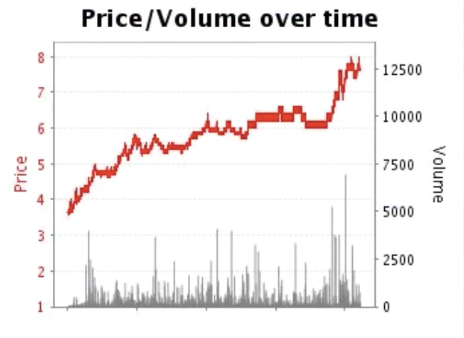
This is because you could have done this trade the night before, the morning of that particular market, you could done it many different times because the rain kept on coming at Ascot and the rain was awful.
I actually took some imagery of the conditions at the start of the race because I thought this will be an interesting point to illustrate.
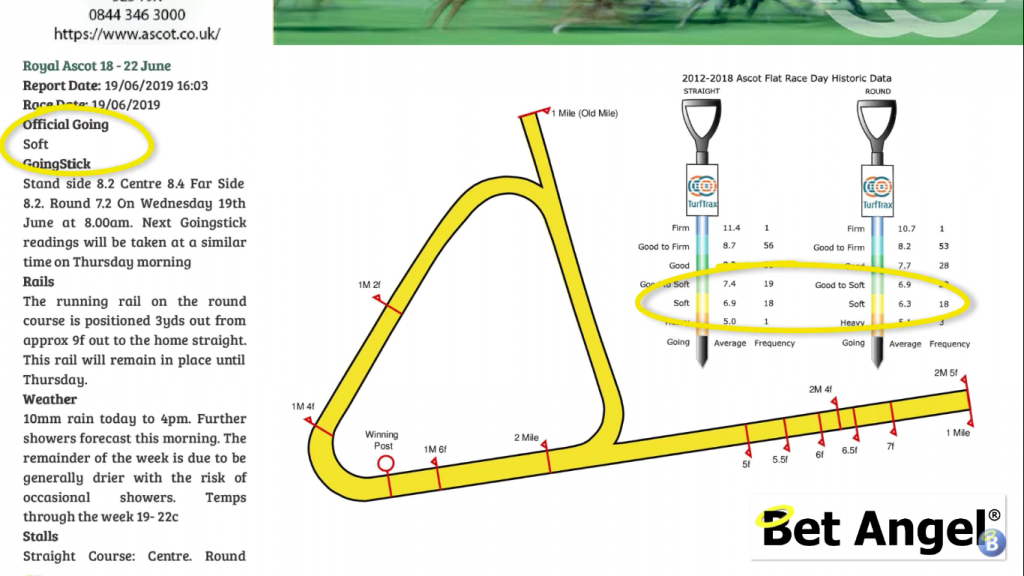
The conditions were pretty awful at Ascot, as a consequence, you would lay Sea of Class because it’s unlikely that the price is going to come in and the price, will just drift and drift and drift until it reaches a point at which people think that it’s a more accurate reflection on his chances of winning on ground it doesn’t like.
Now, if you would have laid, Sea of Class when Haggis came out and said, ‘I don’t think he’s going to run’, what would have happened if he didn’t run was all of those bets would have been void.
You wouldn’t have won or lost anything. So really, there was nothing to lose!
The conditions were poor and getting worse, the price was going to drift. Then if it did run, you’d probably see that the drift would accelerate and then you could exit your trade.
It was an interesting race to partake in. It was one of those rare occasions where everybody was flagging up all of the issues. I remember when it was declared that it was going to run and there were quite a few comments around saying, ‘I can’t believe they’re actually going to run it.’
But it made obvious sense in terms of the way that the market went. You knew that it didn’t like the ground, you knew that its chance was going to decline if it did run on ground as it was unsuitable. Therefore, the price was going to drift so you could do a nice little trade off the back of it.
“Weather is a great metaphor for life — sometimes it’s good, sometimes it’s bad, and there’s nothing much you can do about it but carry an umbrella or choose to dance in the rain!”
–Terri Guillemets
Weather has an impact in a number of different sports in a number different ways, like quote above wonderfully sums up!
I’ve given you three examples cricket, golf and racing where you can use the weather to your advantage. You can apply weather to some aspects of a football match and therefore a football trading strategy, but that’s an entirely different discussion as it’s far more nuanced.
Of course, everybody looks at the weather, everybody thinks they are an expert on the weather. But it’s the ability to interpret or outthink what’s likely to happen in a market because of the weather forecast, which you’re probably going to be looking at anyhow. But if you look at it and a little bit deeper detail, then you can probably pull off a decent trade.
The post A very British Betfair trading strategy! appeared first on Betfair trading blog | Expert advice from Professional Betfair trade.

